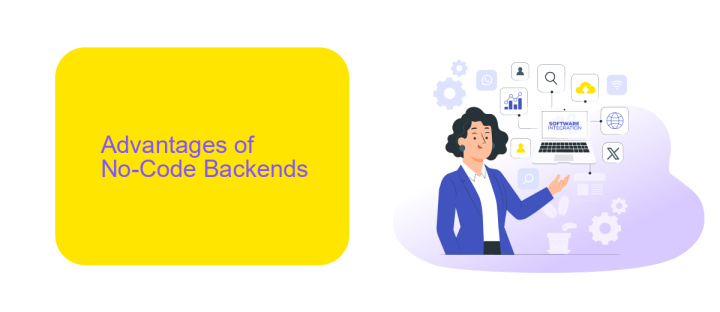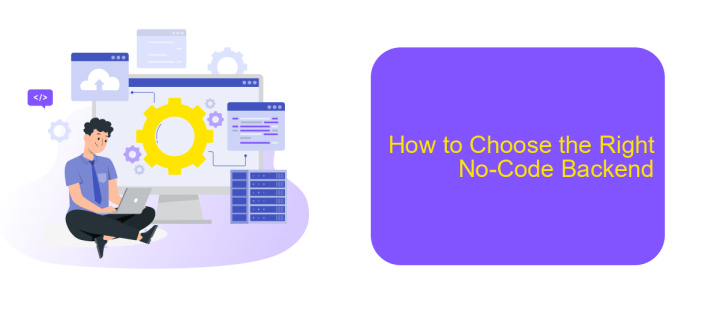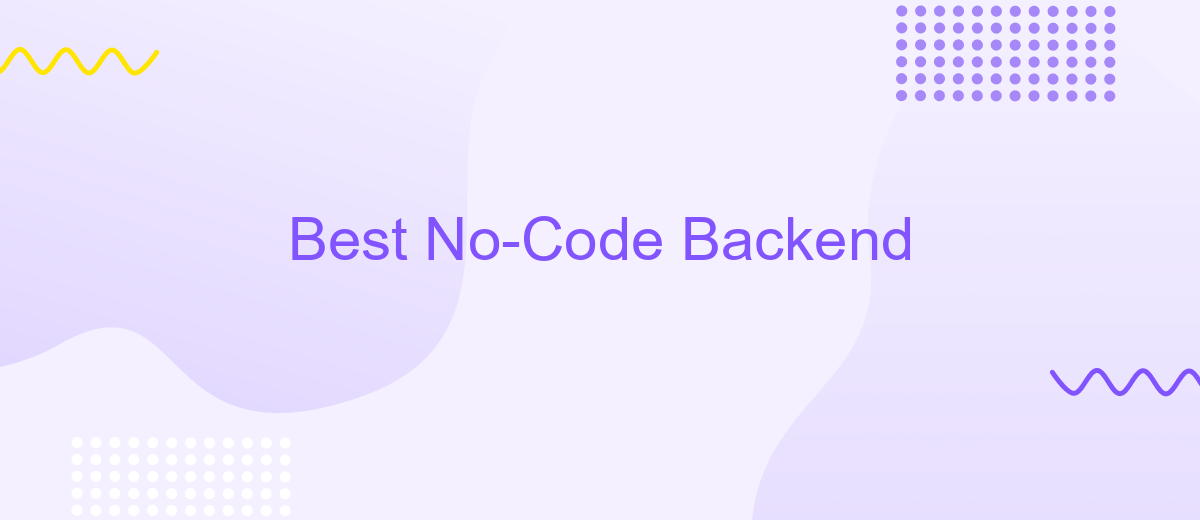Best No-Code Backend
In today's fast-paced digital landscape, the demand for efficient and user-friendly backend solutions is higher than ever. No-code platforms have revolutionized the way developers and non-developers alike can build robust backend systems without extensive coding knowledge. This article explores the best no-code backend options available, helping you choose the right tool to streamline your development process and bring your ideas to life.
Introduction
In today's fast-paced digital landscape, the demand for efficient backend solutions has never been greater. No-code backend platforms have emerged as a game-changer, enabling developers and non-developers alike to build robust applications without writing a single line of code. These platforms are designed to simplify the development process, reduce costs, and accelerate time to market.
- Ease of Use: No-code platforms are user-friendly and accessible to individuals with minimal technical expertise.
- Cost-Effective: They eliminate the need for hiring specialized developers, thereby reducing overall project costs.
- Rapid Development: These tools enable faster prototyping and deployment, allowing businesses to stay competitive.
- Scalability: No-code backends can scale effortlessly to meet growing business demands.
One notable example of a no-code integration service is ApiX-Drive, which facilitates seamless connections between various applications and services. By leveraging such tools, businesses can automate workflows and enhance productivity without the complexities of traditional coding. As the no-code movement continues to gain momentum, it's essential to explore the best options available to optimize your backend infrastructure.
Advantages of No-Code Backends

No-code backends offer significant advantages for both developers and non-developers. One of the primary benefits is the speed of development. Traditional coding requires extensive time for writing, debugging, and testing code. With no-code platforms, you can create functional backends in a fraction of the time, allowing for rapid prototyping and faster time-to-market. This efficiency is particularly valuable for startups and small businesses that need to launch their products quickly to stay competitive.
Another key advantage is the ease of integration with other services and applications. Platforms like ApiX-Drive simplify the process of connecting your backend with various APIs, enabling seamless data flow and automation between different tools. This eliminates the need for complex coding and reduces the likelihood of errors. Additionally, no-code backends are highly customizable, allowing users to tailor their applications to specific needs without requiring advanced technical skills. This democratizes technology, making it accessible to a broader audience and fostering innovation across diverse industries.
Top No-Code Backend Platforms

In today's fast-paced digital landscape, no-code backend platforms have become essential for developers and businesses looking to streamline their processes and reduce development time. These platforms provide a user-friendly interface and powerful functionalities that eliminate the need for traditional coding skills.
- Bubble: Known for its robust capabilities, Bubble allows users to build and host web applications without writing any code.
- Backendless: This platform offers a comprehensive set of features, including user management, file storage, and real-time database functionalities.
- ApiX-Drive: Ideal for setting up integrations, ApiX-Drive helps users connect various services and automate workflows seamlessly.
- Airtable: A versatile tool that combines the simplicity of a spreadsheet with the power of a database, making it perfect for managing data.
- Firebase: Google's Firebase provides a suite of cloud-based tools for building and managing mobile and web applications.
Choosing the right no-code backend platform can significantly impact your project's success. Whether you need robust database management, seamless integrations, or user-friendly interfaces, these platforms offer a variety of solutions to meet your needs. Consider your specific requirements and explore these top platforms to find the best fit for your project.
How to Choose the Right No-Code Backend

Choosing the right no-code backend can significantly impact your project's success. It's essential to consider several factors to ensure you select a solution that meets your specific needs. Start by identifying the core functionalities you require, such as database management, user authentication, and API integrations.
Next, evaluate the ease of use and learning curve associated with the platform. A no-code backend should simplify your development process, not complicate it. Look for platforms with intuitive interfaces and comprehensive documentation to help you get started quickly.
- Scalability: Ensure the platform can grow with your project.
- Security: Check for robust security features to protect your data.
- Support: Look for platforms with strong customer support and active communities.
- Integration: Consider services like ApiX-Drive for seamless API integrations.
Finally, consider the cost and pricing structure of the platform. Some no-code backends offer free tiers or pay-as-you-go options, which can be beneficial for startups or small projects. By carefully evaluating these factors, you can choose a no-code backend that aligns with your project's goals and resources.


Best Practices for Using No-Code Backends
When utilizing no-code backends, it's essential to start by clearly defining your project requirements and choosing a platform that aligns with your goals. Ensure that the no-code solution you select offers scalability and flexibility to accommodate future growth. Focus on user-friendly interfaces that allow for easy customization and integration with other tools. Regularly test your backend to identify and resolve any performance issues early on, ensuring a smooth user experience.
Integrating your no-code backend with other applications can significantly enhance its functionality. Use services like ApiX-Drive to automate workflows and connect various apps seamlessly. ApiX-Drive simplifies the integration process, allowing you to link your no-code backend with numerous third-party services without writing a single line of code. Additionally, always maintain proper documentation of your configurations and workflows to facilitate troubleshooting and future updates. Prioritize data security by implementing robust authentication and encryption methods to protect sensitive information.
FAQ
What is a no-code backend?
Who can benefit from using a no-code backend?
How secure are no-code backend platforms?
Can I integrate third-party services with a no-code backend?
What are the limitations of using a no-code backend?
Routine tasks take a lot of time from employees? Do they burn out, do not have enough working day for the main duties and important things? Do you understand that the only way out of this situation in modern realities is automation? Try Apix-Drive for free and make sure that the online connector in 5 minutes of setting up integration will remove a significant part of the routine from your life and free up time for you and your employees.

